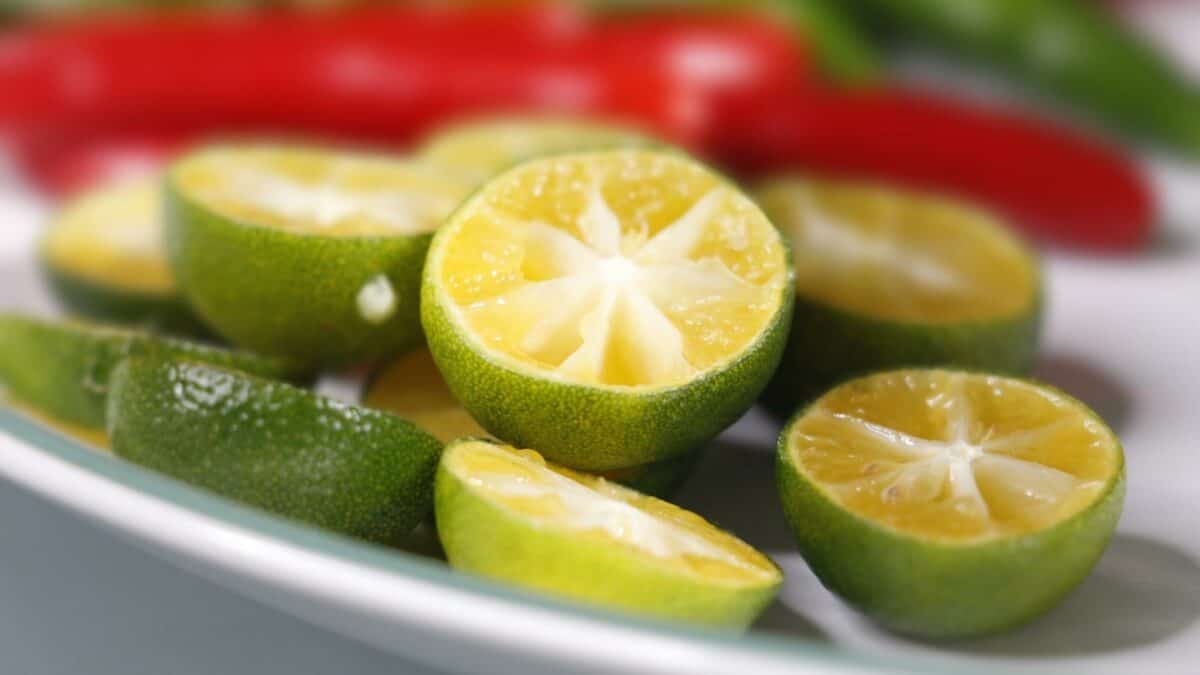Calamansi: The Small Sweet Filipino Citrus Fruit
Calamondin (Citrofortunella microcarpa or Citrofortunella mitis) is an important citrofortunella, meaning that it is an intergenetic hybrid between a member of the genus citrus (in this case probably the mandarin orange) and the kumquat belonging to Fortunella.
Calamondin is used mainly as an ornamental tree, rather than for food, although the fruit is edible and called calamansi.

The word “calamansi” is derived from the Tagalog word for “lemon”. It is a small citrus fruit that is popular in Southeast Asia.
The calamansi is often used as a souring agent in Filipino cooking. It can also be used as a flavoring for beverages such as tea and coffee.
The calamansi is a small, round fruit that is yellow or green in color. It has a sour, acidic taste and a strong smell. The fruit is used fresh or dried, and can be found in most Filipino markets.

Check out our new cookbook
Bitemybun's family recipes with complete meal planner and recipe guide.
Try it out for free with Kindle Unlimited:
Read for freeIn this post we'll cover:
How to eat calamansi
The calamansi is a small citrus fruit that is popular in Southeast Asia. It can be eaten whole, but is more often used as a souring agent in Filipino cooking.
Yes, the skin of the fruit is edible and is actually sweeter than the flesh of the fruit. The skin is thin and shiny, and can be eaten along with the rest of the fruit.
What’s the origin of calamansi?
The calamansi is native to the Philippines and surrounding areas in southern China, Taiwan, Borneo, and Sulawesi.
What’s the difference between calamansi and lemon?
Calamansi and lemon are both citrus fruits that belong to the same family. They are both rich in vitamin C. But a lemon is about 3 times the size of a calamansi and more sour than the sweeter calamansi.
What’s the difference between calamansi and yuzu?
Calamansi and yuzu are both citrus fruits that are used in Asian cuisine. They are similar in size and shape, but yuzu is more yellow than calamansi. Yuzu’s flavor is deeper and more sour, closer to the sourness of a lemon while calamansi is a little sweeter.
Popular calamansi pairings
What goes well with calamansi?
Calamansi pairs well with fish, chicken, and pork. It is often used as a souring agent in Filipino cooking. popular dishes that feature calamansi include sinigang (a soup made with tamarind and vegetables), adobo (a dish made with chicken or pork), and kare kare (a stew made with beef or pork).
Is calamansi healthy?
Yes, calamansi is a good source of vitamin C. It also contains citric acid, which can help to boost your immune system. Calamansi is low in calories and fat, and is a good choice if you are looking for a healthy snack.
Conclusion
Calamansi is a great addition to any dish. It’s not overpowering and adds just a little acidity and sweetness.
Check out our new cookbook
Bitemybun's family recipes with complete meal planner and recipe guide.
Try it out for free with Kindle Unlimited:
Read for freeJoost Nusselder, the founder of Bite My Bun is a content marketer, dad and loves trying out new food with Japanese food at the heart of his passion, and together with his team he's been creating in-depth blog articles since 2016 to help loyal readers with recipes and cooking tips.

